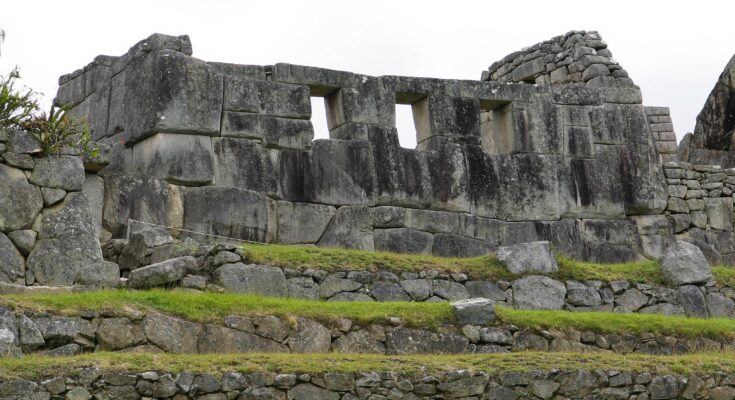A 4,000-year-old ceremonial temple containing human remains has been discovered in northwestern Peru, according to a translated statement from the Peruvian Ministry of Culture.
The walls of the ceremonial temple along with the human remains were discovered beneath a sand dune in the Zana district of northwestern Peru. It is part of the Los Paredones de la Otra Banda—Las Animas Archaeological Complex.
Archeologists have discovered the ruins of a 4,000-year-old temple in the sandy desert district of Zana in Peru. The team also found skeletal human remains which may have been offerings for religious rituals pic.twitter.com/dLMmuHLJ0j
— Reuters Science News (@ReutersScience) July 6, 2024
Following excavations, which began on June 3rd, the archaeologists uncovered what was left of the walls of the multi-story temple. Buried between the walls were the skeletons of three adults.
The burials between the temple walls contained ceremonial offerings wrapped in cloth. This provides evidence that this may have been the site of a sacrificial ritual, Channel News Asia reported.
“We are still waiting for radio-carbon dating to confirm the date, but the evidence suggests this religious construction could be part of a religious tradition of temples built on Peru’s northern coast during that period,” Luis Muro, an archaeologist from Peru’s Pontifical Catholic University who led the research, said in speaking to Reuters.
“We are probably looking at a 4,000-year-old religious complex that is in an archaeological space defined by walls built of mud,” he said. “We have what would have been a central staircase from which one would ascend to a kind of stage in the central part.”
The walls are adorned by detailed friezes depicting images of the human form with a bird’s head, cat-like features, and reptilian claws. The top sections of the walls were covered in a “fine plaster with a pictorial design,” according to the statement.
The other temple monument discovered in Peru
Archaeologists also uncovered a monument dating back to between 600 AD and 700 AD, which would have been during Peru’s Moche period. The Moche, who carried out human sacrifices, are known for their construction of huge temples and intricate works of art, including ceramic goblets shaped to look like human heads.
The research team also uncovered the burial of a child that was around five or six years of age. That burial took place years after the burial of the three adults.
Northern Peru is home to many ceremonial complexes, such as the Sacred City of Caral, which is around 5,000 years old. Southern Peru’s Ica region is home to the Nazca lines. These are unusual geoglyphs etched into the desert over 1,500 years ago.
Peru’s best-known archaeological site is the Incan citadel Machu Picchu. This is tucked away in the mountainous Cusco province. It is a World Heritage site built in the mid-15th century.
Perhaps the most renowned temple in Peru is actually in Huayna Picchu, near Machu Picchu. It is known as the Temple of the Moon and features stone masonry and an open-face, shallow cave.



